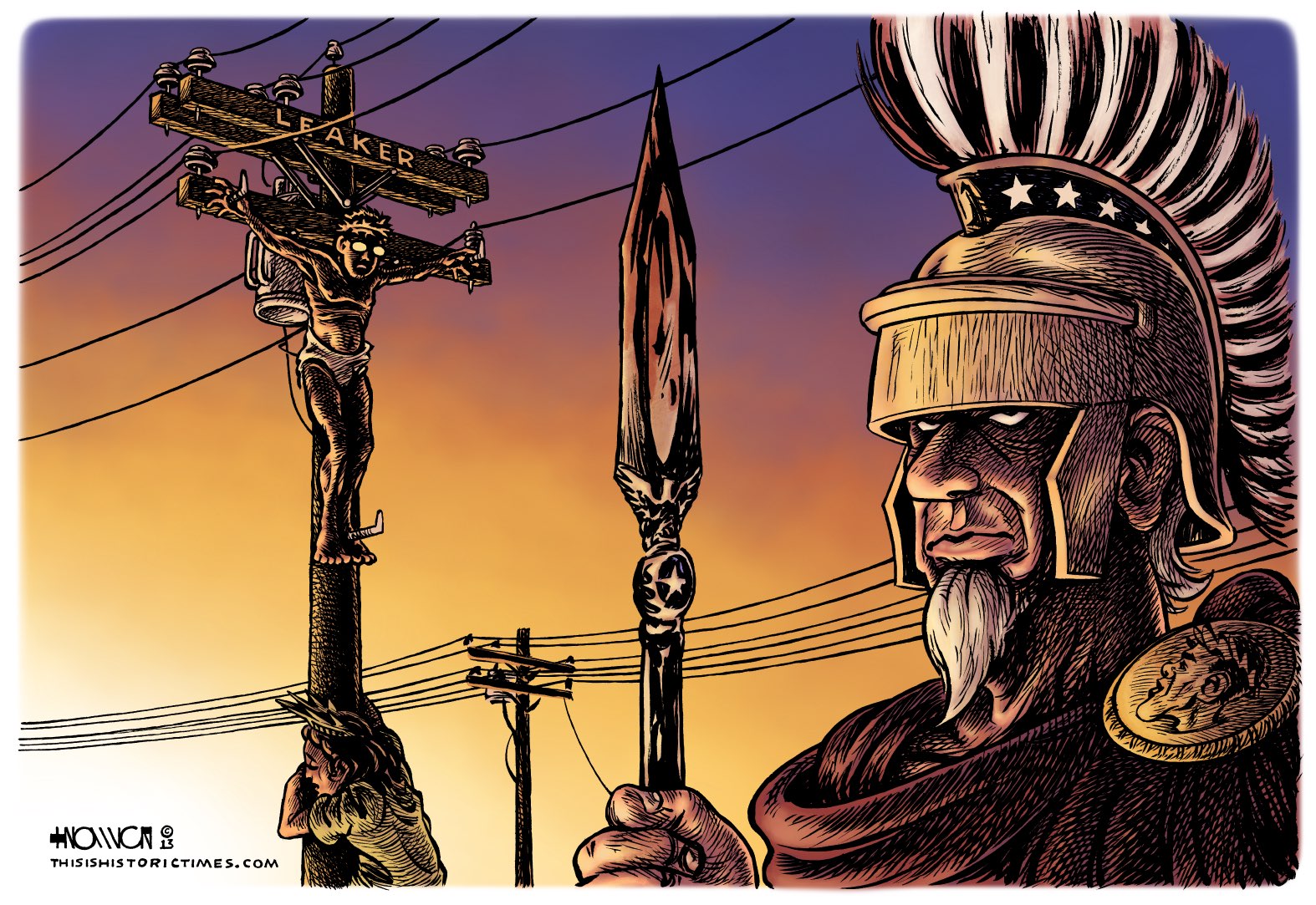The Passion of the Whistleblower

Following last week’s conviction of Bradley Manning for leaking video evidence of unrestrained murder of civilians by the US military in Iraq and Afghanistan, as well as numerous other classified cables, I wanted to draw something commenting on the bravery of both Manning and Edward Snowden in exposing wrong-doing covered up or even sanctioned by the US Government, in spite of the consequences they surely knew they would suffer, at least in general terms–Manning will spend up to 35 years in prison, apparently with a blind, unfeeling eye turned towards his/her gender dysphoria, while Snowden might never be allowed to return home a free man again, and will probably have to really watch his back from now on.
Since I wanted to address them both with a single image, it was fortunate for me that they’re both (at least, for the time being) skinny, generic white guys with glasses and scrubby facial-hair; that meant all I had to do was compose the drawing in such a way that the physical details differentiating the two would be obscured.
My mind went right away to the imagery of martyrdom–indeed, Wikipedia’s article for the term “martyr” says that the word originally meant “witness,” which seems very appropriate for this topic.
While the specific word “martyr” may call thoughts of Islamic Jihad to the minds of many modern Americans, I knew that many of its more (relatively) positive themes are today commonly associated with the crucifixion of Jesus Christ. The rich tradition of artwork around that subject gave me two ideas that I liked: the first was the one you see above, and the second was a take-off of one of my favorite sculptures, Michelangelo’s Pietà.
While I appreciated the subtlety of the second idea, I thought it would be harder for many people to understand, if they recognized the reference at all. I also thought the first idea would provide more opportunities for symbolic details.
Both concepts included Liberty in the role of the grieving mother of Jesus, but the first allowed me to visually represent the telecommunications aspects of Manning and Snowden’s leaks by using a utility pole as a crucifix, relating the pejorative use of the word “leaker” to the sarcastic “King of the Jews” sign said to have been posted over Jesus’ head. It also let me cast Uncle Sam as a lance-bearing centurion, which gives the cartoon additional layers of meaning relating to the conflicted national response to these leaks, and the fall of the Roman Empire.
The inclusion of a “crying (statue of) Liberty,” of course, is a greatly-overused cliché in modern editorial cartoons, as often mocked by Ward Sutton’s parody cartoonist “Kelly,” for its excessively maudlin nature. However, any image of the crucifixion would be incomplete without Mary, and I think I derive some additional, valuable meaning from the character’s inclusion, here.
What do you think? If you liked my interpretation, please consider donating to me!


One Response to “The Passion of the Whistleblower”
I have to say you hit the nail on the head with this one here. Seems the rights and protections of the whistle blowers extends only to the private sector, but not when you blow the whistle on the government and the law breaking, human rights violating actions that they commit.
Leave a Response